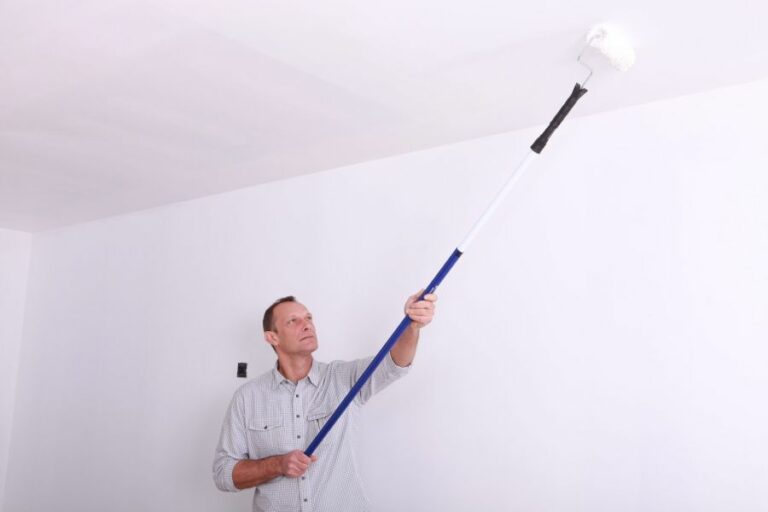Prepare Surfaces With Paint-Removing Tools. What Pros Say
Are you ready to kickstart your next painting project but struggling to remove the old paint from the surfaces? Fear not, as we’re here to guide you on effectively using paint-removing tools to prepare those surfaces for a flawless new coat of paint. Together, we’ll explore the perfect paint removers that will make your task hassle-free and ensure you achieve professional-grade results.
Prepare surfaces with paint-removing tools:
Proper surface preparation is vital for successful painting. Use appropriate paint-removing tools, such as chemical removers, mechanical tools (sandpaper, powered sanders, wire brushes, and paint scrapers), or heat-based removers (heat guns) to achieve desired results. Follow safety guidelines and manufacturer instructions, and responsibly dispose of waste material.

Looking to give new life to dated or peeling surfaces? Discover how to effectively and safely use paint removing tools to restore and prepare them for repainting. Keep reading to learn tips and tricks for optimal results and a stunning, long-lasting finish.
Contents
- 1 Surface Preparation: Utilizing Paint Removal Tools
- 2 Top Tools for Stripping Away Old Paint
- 3 Essential Tools for Paint Scraping: A Guide
- 4 Paint Removal Techniques for Various Surfaces
- 5 Discover the Most Effective Paint Stripping Solutions
Surface Preparation: Utilizing Paint Removal Tools
Proper surface preparation is essential for achieving professional results when painting. Failure to prepare a surface adequately can lead to peeling, blistering, or otherwise compromised paint jobs. One of the most critical steps in surface preparation is removing old paint or any other unwanted substances.
• The Role of Paint Removing Tools in Surface Preparation
Selecting the right paint removal tool can speed up the surface preparation process while ensuring that the paint adheres well to the surface. Common types of paint-removing tools include:
– Chemical Paint Removers
Chemical paint removers are highly effective in breaking down and lifting paint from surfaces. Using a paint stripper that is free of methylene chloride or N-methyl pyrrolidone (NMP) is recommended, as these chemicals can pose health and environmental risks.
– Mechanical Paint Removing Tools
Mechanical paint removal tools use abrasive action to remove paint. Examples of these tools include:
- Sandpaper or sanding sponges: Ideal for small projects, light-duty sanding, and curved surfaces.
- Powered sanders: Several types of electric sanders are available, including orbital, belt, and detail sanders, each designed for specific applications.
- Wire brushes and paint scrapers: Suitable for removing loose, chipped paint and light rust.
– Heat-Based Paint Removers
Heat-based paint removers, such as heat guns, use high temperatures to soften the paint, making it easy to scrape off. Following proper safety protocols when using heat-based paint removers is essential, as they can be hazardous if handled incorrectly.
• Safety Considerations When Using Paint Removing Tools
Before embarking on your paint stripping project, it’s essential to familiarize yourself with the potential hazards and best practices for using each tool.
- Always read and follow the manufacturer’s instructions for both the paint remover and any associated equipment.
- Wear appropriate personal protective equipment (PPE), including gloves, goggles, and a respirator with the correct filters.
- Ensure that your work area is well-ventilated, and dispose of any paint chips or residue according to local regulations.
• Techniques for Effective Paint Removal
Depending on the type of paint remover you’re using, the following techniques can help you achieve the best results:
– Applying Chemical Paint Removers
- Apply a thick layer of paint remover using a brush or roller.
- Allow the paint remover to work for the recommended time, usually 30 minutes to several hours, depending on the product.
- Use a paint scraper, plastic scraper, or stiff bristle brush to remove the softened paint.
- Clean and neutralize the surface according to the paint remover instructions.
– Using Mechanical Paint Removing Tools
- Begin by selecting the appropriate grit of sandpaper or the specific type of sander for your project.
- Work in a consistent, linear motion, periodically checking your progress to avoid over-sanding or damaging the surface.
- For wire brushes and paint scrapers, use moderate pressure and a back-and-forth motion to remove paint.
– Employing Heat-Based Paint Removers
- Attach the proper nozzle or attachment to the heat gun according to the manufacturer’s instructions.
- Turn on the heat gun, allowing it to reach the proper temperature.
- Hold the heat gun about 1-2 inches away from the surface, slowly moving it back and forth until the paint bubbles or softens.
- Use a paint scraper or putty knife to remove the softened paint.
• Final Thoughts on Preparing Surfaces with Paint Removing Tools
Proper surface preparation is an essential step in any successful painting project.
By selecting the appropriate paint removing tool and employing the right techniques for your specific application, you can ensure that your new paint adheres effectively, providing a durable and professional finish.
Remember to follow all safety recommendations and manufacturer’s instructions during the paint removal process, and dispose of any waste material responsibly.
Top Tools for Stripping Away Old Paint
Paint removal can be a challenging task, whether you’re working on a small DIY project or a professional job. Given the variety of paint scraping tools available in the market, choosing the ideal tool tends to be confusing.
• High-Quality Paint Scraper
A high-quality paint scraper, also known as a putty knife or chisel knife, is a versatile tool for removing old paint from various surfaces. The flat blade and ergonomic handle design make it significantly useful in scraping paint without damaging the surface underneath.
I recommend investing in a multi-purpose paint scraper that features a stainless steel blade, as it can resist corrosion and offer a more extended service life.
– Pros
- Affordable and widely available
- Easy to use, requiring minimal effort
- Ideal for small and medium-sized paint removal projects
- Compatible with both wood and metal surfaces
- Different blade widths available to cater to specific tasks
– Cons
- Not ideal for large-scale paint removal projects
- Manual method requires more time and effort than power tools
• Infrared Paint Remover
When dealing with old, stubborn layers of paint on wooden surfaces, an infrared paint remover can be your best companion. This tool uses infrared heat technology to soften and loosen the paint, enabling easy removal with a paint scraper.
This method is less damaging to the surface and preserves the wood’s natural look. Be sure to follow the EPA guidelines to ensure safe and efficient paint removal when working with lead-based paint.
– Pros
- Efficient at removing multiple layers of paint
- Environmentally friendly, as it does not generate harmful dust
- Safe for wooden surfaces
– Cons
- Expensive compared to manual tools
- Not suitable for use on metal surfaces
- Potential health and safety risks if not used properly
• Electric Paint Remover
When working on large-scale paint removal projects, an electric paint remover can save both time and effort. This power tool features a rotary disc equipped with abrasive attachments for efficiently removing paint.
When using an electric paint remover, always make sure to use appropriate safety gear, such as a dust mask, goggles, and gloves.
– Pros
- Faster and more efficient than manual methods
- Ideal for large-scale paint removal projects
- Adjustable speeds for various paint types and surface conditions
– Cons
- More expensive than manual tools
- Generates dust, requiring proper cleanup and ventilation
- Potentially damaging to wood surfaces if used incorrectly
• Paint Stripper
A chemical paint stripper is a liquid or gel solution that breaks down the bond between the paint and the surface, making it easier to remove with a scraper.
When using a chemical paint stripper, always adhere to the manufacturer’s instructions, and wear appropriate safety gear, such as gloves and goggles. It’s essential to choose the right paint stripper based on the specific paint type and surface material.
The US Department of the Interior website offers more information on paint strippers and their proper usage.
– Pros
- Effective at removing stubborn paint layers
- Works well on intricate surfaces with detailed patterns
- Can be used in conjunction with other paint removal tools
– Cons
- Produces toxic fumes; proper ventilation and safety gear are essential
- Can cause damage to certain surfaces if used improperly
- Requires more cleanup compared to other methods
• Conclusion
In conclusion, the best tool to remove old paint primarily depends on the size and complexity of the project. For small to medium-sized projects, a high-quality paint scraper or putty knife is usually sufficient.
For larger projects or those involving lead paint and intricate surfaces, an infrared paint remover, electric paint remover, or chemical paint stripper might be more appropriate.
It’s essential to consider the specific paint type, surface material, and safety precautions when selecting a paint removal tool.
Always wear proper safety gear and follow manufacturers’ instructions during use. By choosing the appropriate tool and using it correctly, you’ll find that removing old paint from any surface can be a quicker and more manageable task.
Tool Name | Description | Usage |
|---|---|---|
Putty knife | A flat, flexible tool with a wide blade, used for spreading or scraping materials such as paint. | Use the edge of the blade to scrape away paint, applying even pressure to avoid damaging the surface beneath. |
Paint scraper | A device with a sharp, flat blade that is specifically designed for removing paint from surfaces. | Hold the scraper at a 30-degree angle and push the blade edge along the surface to remove paint. |
Wire brush | A brush with stiff, wire bristles that are excellent for removing paint from irregular surfaces. | Scrub the surface with the wire brush to loosen and remove paint. |
Heat gun | An electric tool that produces a concentrated stream of hot air to soften and remove paint. | Hold the heat gun near the surface, being careful not to overheat the paint, and use a scraper to remove the softened paint. |
Power sander | An electric sander that uses abrasive surfaces to remove paint from flat surfaces. | Choose the appropriate sandpaper grit for the paint type and thickness, and carefully sand the surface until the paint is removed. |
Essential Tools for Paint Scraping: A Guide
Paint scraping is a necessary step in any painting project, whether you’re preparing your home’s exterior for a fresh coat or refurbishing a piece of furniture. To achieve professional results, you must use the correct tools and techniques.
• High-Quality Paint Scrapers
The most basic and indispensable tool for paint removal is a paint scraper. These come in various shapes and sizes, allowing you to choose the most suitable tool for your specific project. Some common types of scrapers include:
– Putty Knife
A putty knife is a versatile hand tool with a flexible flat blade that is typically 1-6 inches wide. It is useful for removing loose or peeling paint, as well as applying and smoothing putty or joint compound.
Opt for a stainless steel blade for better durability and resistance to rust. I recommend having one with a comfortable grip to reduce hand strain during prolonged use.
– 5-in-1 Painter’s Tool
The 5-in-1 painter’s tool is a multitasker with a sharp, flat blade that not only scrapes paint but also performs functions like spreading, filling holes, cleaning rollers, and opening paint cans. Its versatility makes it a cost-effective investment, particularly for DIYers.
– Pull Scraper
A pull scraper features a triangular-shaped blade and a handle designed for pulling rather than pushing the blade. This configuration allows for more efficient lifting of paint and can help prevent damage to the underlying surface. A pull scraper with a comfortable grip is an excellent choice for prolonged use.
– Carbide Scraper
Carbide scrapers have replaceable carbide blades, which are much harder and more durable than traditional steel blades, making them perfect for stubborn paint removal. Although they can be more expensive, the long-lasting carbide blades make them a worthwhile investment.
• Wire Brushes & Bristle Brushes
A wire brush is a tool with stiff metal bristles that are particularly effective for removing rust, paint, and other debris from irregular surfaces or tight corners.
Depending on your needs, choose a heavy-duty wire brush with crimped or twisted bristles, which are better for aggressive cleaning, or a softer brush for more delicate paint removal.
A bristle brush with synthetic or natural fibers can also be used for removing loose paint flakes and dust, especially when working with wood. Always choose a brush with a comfortable grip to make your paint-scraping job easier.
• Electric Paint Removers
For larger or more challenging paint removal projects, electric paint removers, such as heat guns and power sanders, can save significant time and effort.
– Heat Gun
A heat gun is a handheld device that produces a stream of hot air to soften the paint, allowing it to be easily scraped away. This tool is particularly useful for removing multiple layers of paint or paint that has become hard and brittle.
When using a heat gun, always take appropriate safety precautions, such as wearing heat-resistant gloves and a respirator.
– Power Sander
A power sander is an electric tool used to sand surfaces quickly and efficiently by using abrasive sandpaper.
Orbital and random orbit sanders are suitable for paint removal projects. Be sure to use the appropriate grit sandpaper for your specific task, and always follow proper safety instructions, such as wearing goggles and a dust mask.
• Protective Gear
Personal protective equipment (PPE) is crucial for paint scraping tasks to ensure safety and comfort during the process. Some essential PPE includes:
- Safety glasses: To protect your eyes from paint chips and debris
- Respirator or dust mask: To prevent inhalation of harmful paint particles and vapors
- Heavy-duty gloves: To protect your hands from sharp tools and hot surfaces
- Long sleeves, pants, and closed-toe shoes: To protect your skin from contact with paint and chemicals
• Additional Accessories
Some additional accessories can make your paint scraping job more efficient and organized:
- Drop cloths: To protect floors and furniture from paint debris and dust
- Painter’s tape: To secure drop cloths and mask areas that shouldn’t be painted
- Plastic scraper: For gentle paint removal on delicate surfaces
- Extension pole: To reach high or hard-to-access areas
In conclusion, having the right tools for paint scraping can make a significant difference in the quality and efficiency of your painting project.
By investing in a combination of manual and electric tools, as well as appropriate safety gear and accessories, you will be well-equipped for a successful paint removal job.
Paint Removal Techniques for Various Surfaces
Removing paint from various surfaces can be a tedious and challenging task, but there are several techniques and products that can make the process easier.
• Removing Paint from Wood
One of the most common places where the paint needs to be removed is from wooden surfaces. Whether it be doors, furniture, or wooden floors, there is an effective method to remove paint without damaging the wood.
– Sanding
For small paint spills or drips, using sandpaper or an electric sander can effectively remove paint from wood surfaces. Be sure to start with coarse grit sandpaper (such as 60 to 80 grit) and work your way up to finer grit (100 to 150 grit) for a smooth finish.
Sanding may not be ideal for removing paint from ornate or carved wood, as it can cause damage to the surface.
– Chemical Paint Strippers
Chemical paint strippers can be incredibly effective in removing paint from wooden surfaces, especially for areas that are difficult to sand. Look for eco-friendly, low-VOC (volatile organic compound) paint strippers to minimize the possible effects on your health and the environment.
Apply the paint stripper according to the manufacturer’s instructions, usually by brushing it on and allowing it to sit for a specified time. Afterward, use a scraper or putty knife to remove the softened paint. Finally, clean the wood surface with mineral spirits or denatured alcohol and let it dry thoroughly.
• Removing Paint from Metal
Metal surfaces, such as storage lockers, bicycles, or wrought iron fences, may accumulate paint over time. You can strip paint from metal surfaces using the following methods.
– Using a Heat Gun or Propane Torch
Applying heat to the paint can soften and blister it, making it easier to scrape off. When using a heat gun, hold it about 2 to 3 inches from the surface and slowly move it back and forth until the paint bubbles and lifts.
For propane torches, keep the flame at a low setting and work carefully to avoid damaging the metal.
– Chemical Strippers
As with wooden surfaces, chemical paint strippers can also be used on metal surfaces. Be sure to choose a stripper that is suitable for metal, as some may cause corrosion or discoloration. Follow the manufacturer’s instructions for application and removal.
• Removing Paint from Masonry and Concrete
To remove paint from brick, stone, or concrete surfaces, try the following methods.
– Pressure Washing
For outdoor surfaces, pressure washing can be an effective method for removing paint from masonry or concrete surfaces. Be sure to use a pressure washer with a PSI (pounds per square inch) of 2,000 to 3,000 and a fan attachment to prevent damaging the surface.
– Sandblasting
For large indoor or outdoor surfaces, sandblasting can be efficient in removing paint. However, this process requires specialized equipment and should be done by a professional.
– Chemical Strippers
Masonry paint strippers are available for use on brick, stone, and concrete surfaces. Always follow the manufacturer’s guidelines and ensure proper ventilation when using such products indoors.
• Removing Paint from Plastic
Plastic surfaces can be delicate and can easily be damaged or even melted by chemical paint removal methods or heat. To safely remove paint from plastic, consider the following method.
– Scrubbing with a Mild Abrasive
Mix a solution of water and dish detergent, then dip a soft-bristled brush or sponge into the solution and gently scrub the painted area. Avoid using harsh abrasives or scrubbing too hard, as this may scratch or damage the plastic.
• Removing Paint from Glass
Paint on glass surfaces, such as windows or mirrors, can be removed relatively easily using the following technique.
– Scraping with a Razor Blade
Carefully use a razor blade scraper to remove paint from the glass without scratching the surface. Hold the blade at a 45-degree angle and gently scrape away the paint. For added safety, consider using a scraper designed specifically for use on glass surfaces.
• Removing Paint from Fabric
If paint accidentally spills onto clothing or fabric, the following method can be used.
– Blotting and Washing
If the spill is still wet, use a clean cloth or paper towel to blot away as much paint as possible. Once the excess paint is removed, pretreat the stain with a laundry stain remover or detergent and rinse in cold water.
Finally, wash the fabric according to the care instructions and air dry. Avoid using heat to dry, as it can set any remaining paint and make the stain permanent.
In conclusion, removing paint from various surfaces may require different techniques and products, but with a little patience and the proper method, you can effectively remove paint from almost any surface.
Always follow the manufacturer’s instructions, prioritize safety, and test each method on a small, inconspicuous area of the surface to ensure the paint removal process does not cause any damage.
Surface | Method |
|---|---|
Wood | Use a paint scraper, sandpaper, or a heat gun to remove the paint. |
Metal | Apply a chemical paint remover, followed with a wire brush or sandpaper. |
Concrete | Use a pressure washer, chemical paint remover, or sandblasting. |
Brick | Apply a chemical paint remover, use a wire brush, or consider sandblasting. |
Plastic | Use a plastic-safe paint remover, gently scrape or use a soft brush. |
Fabric | Use a paint remover for fabric or wash with detergent, depending on the paint type. |
Glass | Use a razor blade, paint scraper, or rubbing alcohol to remove the paint. |
Discover the Most Effective Paint Stripping Solutions
Whether you’re a homeowner, DIY enthusiast, or a professional painter, you’ve likely encountered the challenge of removing paint from various surfaces.
• Chemical Paint Removers
One of the most common ways to remove paint from surfaces is by using a chemical paint stripper. These products break down the binders in the paint, allowing it to be easily scraped off the surface. There are three main categories of chemical paint removers:
– Solvent-Based Removers
Solvent-based paint removers use chemicals such as toluene, acetone, or methylene chloride to break down the paint. They are highly effective in removing a variety of paint types, but they can be harmful to the environment and your health.
It is essential to use solvent-based paint removers in a well-ventilated area and wear appropriate protective gear, such as gloves and a respirator.
– Bio-Based Removers
Bio-based paint removers, also known as “green” or eco-friendly paint removers, contain natural ingredients like soy and citrus-based solvents. They are less toxic and emit fewer fumes than traditional solvent-based removers.
However, some users find that these products take longer to work and may not be as effective on certain paint types or multiple layers of paint.
– Caustic Removers
Caustic paint removers use alkaline chemicals, such as sodium hydroxide, to break down paint. While caustic removers are effective in stripping paint, they can cause damage to certain surfaces, especially wood, as they darken and raise the grain.
Proper neutralization and rinsing of the surface are required after using a caustic remover.
• Mechanical Paint Removal Methods
In some cases, chemical removers may not be the best option. Alternative methods include mechanical removal techniques, such as scraping and sanding, which can provide effective results without the use of chemicals.
– Manual Scraping
Using a paint scraper, putty knife, or a similar tool, you can manually remove paint from a surface by applying pressure and scraping away the paint.
This method can be time-consuming and labor-intensive, but it doesn’t require the use of chemicals and is suitable for small-scale projects or areas with limited access.
– Sanding
Sanding is a versatile method for removing paint from both wood and metal surfaces. For large surfaces, you can use a power sander, while a manual sanding block or sandpaper can be used for smaller or more intricate areas.
Varying grit sizes are available to suit the specific needs of your project. Remember to wear a dust mask and eye protection when sanding to prevent exposure to paint dust.
– Power Tools for Paint Removal
Various power tools can assist in making paint removal easier and quicker. Examples include electric paint removers, heat guns, and angle grinders with wire brush attachments. Power tools can be particularly effective when dealing with multiple layers of paint or large areas to be stripped.
• Specialized Techniques for Specific Surfaces
Certain surfaces may require specialized paint removal techniques. Examples include:
– Pressure Washing
Pressure washing can be an effective way to remove paint from exterior surfaces, such as brick, stucco, and concrete. High-pressure water is used to blast away paint without causing damage to the underlying surface. However, caution must be taken to prevent water damage and ensure safety during the process.
– Laser Ablation
A relatively new paint removal technique, laser ablation utilizes a high-powered laser to vaporize and remove paint layers. This method is effective for delicate surfaces, such as valuable artwork or historic buildings, where the preservation of the underlying surface is critical.
The process is costly and typically requires a specialist, but it offers a safe, precision alternative for challenging paint removal projects.
• Expert Recommendations
From personal experience, when removing paint from wood surfaces, I highly recommend using a combination of chemical paint removers and manual sanding or scraping to achieve the best results. This approach allows for the efficient removal of paint while protecting the integrity of the wood.
When removing paint from metal surfaces, a heat gun or power tool with a wire brush attachment can be highly effective.
By considering the type of surface, the paint to be removed, and any specific requirements or limitations, you can choose the most effective paint removal method for your project.







